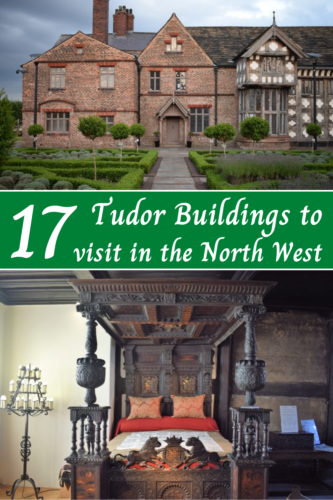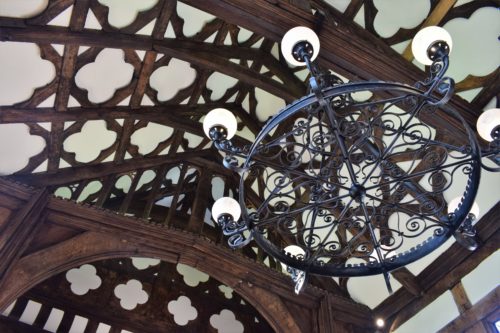Learning about the Tudors and the Stuarts is a big part of the history curriculum at school. It’s also a period in history which is filled with larger than life characters which children are naturally drawn to. Henry VIII is one of the most interesting Tudors and one who everyone seems to know something about; whether it’s his six wives, or the founding of the Church of England, he was a king during one of the more colourful periods in English history.
I always like to supplement the learning my son is doing at school with activities and visits to places which will broaden his learning. We’ve been to the Viking Festival, we’ve visited Roman ruins, Air Raid Shelters and now we are learning about the Tudors. This term we will be visiting some local Tudor buildings to find out more about that period in history.
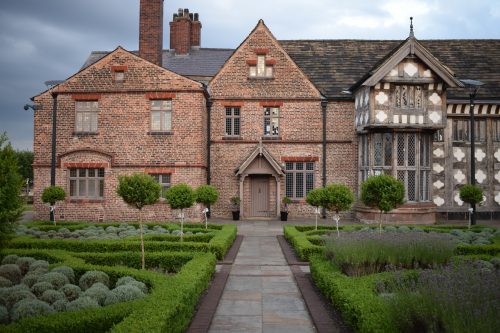
If you’re planning to visit, please do check the opening times before you leave. Some of the houses are closed on some days and sometimes have special events on which they are also closed for. Some of the houses aren’t technically open to the public, but you can visit and enjoy the exterior of the building.
17 Tudor Buildings to visit in the North West
Adlington Hall, Macclesfield, Cheshire – One of the most beautiful country homes in England, Adlington Hall reflects both the history of English architecture and the 700-year story of a single family, the Leghs.
Baguley Hall, Wythenshawe, Manchester – Baguley Hall is a 14th-century timber-framed building in Baguley, Manchester. A former country house, historically in Cheshire, it is now Grade I-listed and a Scheduled Ancient Monument.
Bramall Hall, Stockport – Bramall Hall is a largely Tudor manor house in Bramhall, in Stockport. It is a timber-framed building; the oldest parts of which date from the 14th century, with later additions from the 16th and 19th centuries. The Hall is open to the public and hosts a number of events every year.

Gawsworth Hall, Macclesfield, Cheshire – Gawsworth Old Hall is a Grade I listed country house in the village of Gawsworth, Cheshire, England. It is a timber-framed house in the Cheshire black-and-white style. The present house was built between 1480 and 1600, replacing an earlier Norman house.
Hall i’ th’ Wood, Bolton – A rare surviving example of a Tudor wooden-framed house, Hall i’ th’ Wood was originally built as a half-timbered hall in the early 16th century. The house is home to a collection of17th and early 18th century furniture, objects and artefacts and learn more about the life and work of Samuel Crompton.
Little Moreton Hall, Congleton, Cheshire – Little Moreton Hall, also known as Old Moreton Hall, is a moated half-timbered manor house near Congleton in Cheshire. Visit this iconic Tudor manor house, with its wonky angles and quirky character. The hall, with its crooked walls and uneven floors, may seem fragile but it’s a remarkable survivor.
Ordsall Hall, Salford – Ordsall Hall is a large former manor house in the historic parish of Ordsall, now part of the City of Salford. It dates back more than 750 years, although the oldest surviving parts of the hall were built in the 15th century. It’s free to visit, easy to get to and it’s really set up for family and educational visits. You can read about our visit here.
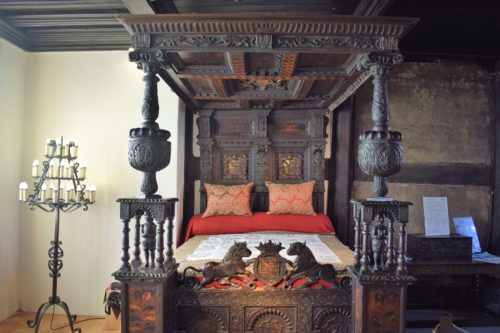
Rufford Old Hall, Ormskirk, Lancashire – Rufford Old Hall is a National Trust property in Rufford, Lancashire. Built in around 1530 for Sir Robert Hesketh, only the Great Hall survives from the original structure. A brick-built wing in the Jacobean style was added in 1661. It sits at right angles to the Great Hall. Later, a third wing was added in the 1820s.
Samlesbury Hall, Preston, Lancashire – The hall has been many things in its past including a pub and a girls’ boarding school, but since 1925, when it was saved from being demolished for its timber, it has been administered by the Samlesbury Hall Trust. This medieval manor house attracts more than 50,000 visitors each year.
Shambles Square, Manchester – Shambles Square is a historic square next to the Exchange Square Metrolink station in Manchester. It is home to four very old pubs – The Crown & Anchor, The Old Wellington Inn, Sinclairs Oyster Bar and The Mitre Hotel. The four pubs were originally in different parts of Manchester city centre, but were moved, brick by brick to their current location in 1999. Shambles Square is free to visit, though you will have to pay for your pints. It’s worth stopping to admire if you’re in the area.
Smithills Hall, Bolton – Smithills Hall is a Grade I listed manor house, and a scheduled monument in Smithills, Bolton. Over the years the original Medieval Hall has been added to; and provides a fascinating history of the people who lived there. The buildings include Tudor and Victorian wings, in addition to the Medieval Hall, and a private chapel.
Speke Hall, Liverpool – Speke Hall is a wood-framed wattle-and-daub Tudor manor house in Speke in Liverpool. It is one of the finest surviving examples of its kind. It is owned by the National Trust, it is a Grade I listed building and it’s well worth visiting and exploring.
Staircase House, Stockport – Staircase House is a Grade II* listed medieval building dating from around 1460 situated in Stockport. The house is famous for its rare Jacobean cage-newel staircase. An audio guide recounts the full history of the house.
Turton Tower, Bolton – Turton Tower is a manor house in Chapeltown near Bolton. Turton Tower is a house that has been evolving over the last 600 years. From a stone tower house in the 1400s to the home of the Tudor Orrell; and later, the Victorian Kay Families. Turton Tower has been altered and adapted to suit the needs and tastes of those who lived here.
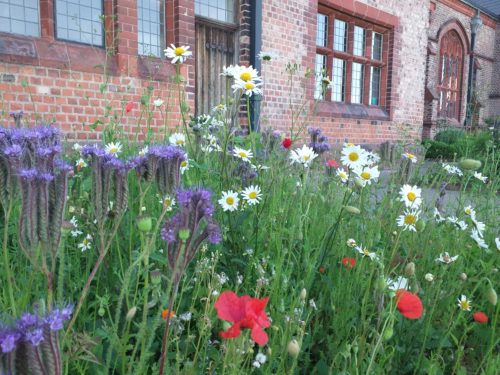
Underbank Hall, Stockport – Underbank Hall is a 16th-century town house in the centre of Stockport. The hall dates back to the 15th century and is a Grade II listed building. It was home of the Arden family of Bredbury until 1823 when it was sold to pay off debts. It later became a bank. A banking hall was then added to the rear in 1919. The hall is still used as a bank today and currently houses the NatWest branch for Stockport. Although technically you can’t visit for a tour; it’s well worth stopping to admire it and popping your head inside to look at the interior of the building.
Worsley Old Hall, Worsley, Greater Manchester – Worsley Old Hall is a pub and restaurant in Worsley, Greater Manchester. It is recorded on the National Heritage List for England as a designated Grade II listed building. You can visit the hall today as it is still a working pub.
Wythenshawe Hall, Wythenshawe, Manchester – Wythenshawe Hall is a 16th-century medieval timber-framed historic house and former manor house in Wythenshawe, Manchester, located in Wythenshawe Park. Built for Robert Tatton, it was home to the Tatton family for almost 400 years. It’s currently closed to the public following a devastating fire in 2016; although you can still visit the park and check out the building from behind the fence.
I’m sure there are plenty more noteworthy Tudor buildings in the North West, so if I’ve missed any, please do let me know and I will add them. I’ve visited a number of these beautiful buildings, and each one has been beautiful and rich with history. I hope you enjoy exploring some of these amazing places.
